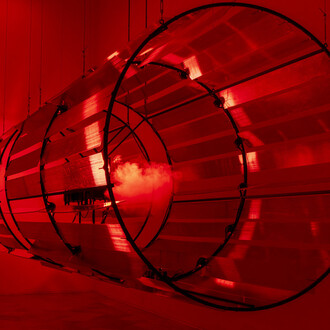The literary magazine El Urogallo devoted its first issue of 1974 to a collective reflection on the contemporary human dwelling. One of the most thought-provoking articles in that publication was “La arquitectura perecedera de las pompas de jabón” [The Perishable Architecture of Soap Bubbles] by José Miguel de Prada Poole1. In it, the architect defended a new type of architecture, where the material of which it is made determines the duration of its own existence. The use of the word perishable in the title, as opposed to ephemeral- the most commonly used term in architecture for a short-lived structure—is a significant detail: the ephemeral does not last long, but the perishable collapses when its constituent material does.
Prada Poole’s text gave several reasons for why he saw the existing urban configuration as too rigid. In his view, economic and social structures made it “last too long”, rendering the city incapable of adapting to new, ever-changing needs. Working from this premise, which encompassed the factors that shape the city and its buildings, Prada Poole constructed a narrative about the city of the future, based on what he called “the three rungs of non- existent architecture”. In this vision, the traditional city would undergo successive transformations and mutate into an intangible, momentum-less city, where instead of solid buildings there would be masses of foam that “appear and disappear, joining and separating as needed”.
Each building would become a “bubble” defined by the physical and atmospheric conditions best suited to its intended use. The city as we knew it would give way to an “intangible reality permeated by stimulatory waves”. This evanescent, shapeless metropolis may sound like a chimera. However, perhaps Prada Poole’s narrative should be seen, not as a naive description of architecture, but rather as a poetic manifesto of his own work projected into the future, from where we look back on it today.
















